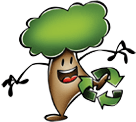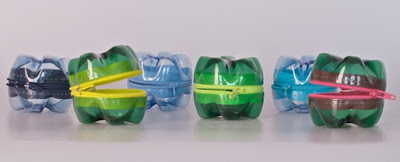 Paper recycling is the process of recovering waste paper and remaking it into new paper products.
Paper recycling is the process of recovering waste paper and remaking it into new paper products.
Paper is composed of vegetal fiber that is an organic matter. That means that it’s made of elements who has life. That’s the reason why we have to learn to value the importance of paper like the exponent and result of a manufacturing process that has resulted in the death of a living being, in this case, a tree.
The time to degradation of the paper is relative, if it is lying on the ground in a rainy place it may not take a long time to disintegrate, but if it’s in another area it can take until 1 year approximately.
 Ideally it is to recycle paper to prevent excessive logging.
Ideally it is to recycle paper to prevent excessive logging.
The majority of people don’t worry about recycling paper because they consider it organic, and they just throw it away, generating greater volume of waste and pollution.
7.000 newspapers has a weight of 1 ton, that’s equal to 3 cubic meters of wood that is the same that 13 trees of a medium size.
90% of paper pulp is made of wood.
 Recycling paper and cardboard is vital to save energy, to avoid the pollution and the most important, to save the forests.
Recycling paper and cardboard is vital to save energy, to avoid the pollution and the most important, to save the forests.That's the reason why we have to be more carefully with our paper, because when we throw away our waste paper we are condemning to death a million trees.
You can do a lot of paper-based products, especially newsprint because the
refining process is poor and by the large number of newspapers that we
have at home.
Some examples of recycling old newspapers are:
Waste baskets
Containers
Coasters
Penholders
Boxes
Trays
Salad containers
Napkin holders, etc.
 How to do a Penholder:
How to do a Penholder:
Materials that you need:
*Newsprint
*Toilet paper tubes.
*A skewer
*A piece of cardboard.
*Vinyl glue (white glue)
*Acrylic paint.
*Acrylic or water varnish (optional)
1) Take a sheet of newspaper, fold it in half vertically and then again in half horizontally.
Cut into the 4 parts which were marked.
2) Make a diagonal fold in one extreme of the paper on the skewer and begin to roll it up as tight as possible.
Arriving in the middle of the piece of paper remove the skewer through one end and continue rolling up using both hands.
Before reaching the opposite corner close it with glue.
3) Cut the rolls of newsprint of the same height of the toilet paper tube.
 At the moment of cutting the rolls you must be carefully because they can disarm. If it's necessary put some glue to secure it.
At the moment of cutting the rolls you must be carefully because they can disarm. If it's necessary put some glue to secure it.
4) Make a base of cardboard and paste it to one extreme of the tube, because this will be the base for the pens.
5) Start to paste the rolls of paper on the toilet paper tube until cover the entire contour.
 6) Let it dry, then cover it with a layer of vinyl glue to secure it.
6) Let it dry, then cover it with a layer of vinyl glue to secure it.
Now, let dry your Penholder for some hours and it will be ready to hold your pens!!


























